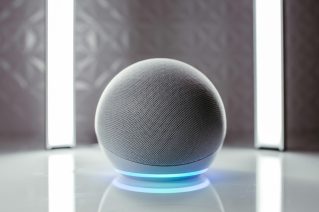How Smart Devices Respond to Human Interaction
Smart devices rely on AI technologies, including natural language processing (NLP) and machine learning, to understand and respond to human commands. These devices use microphones, sensors, and cloud computing to process voice inputs and deliver relevant responses. The key functionalities that enable human interaction include:
- Voice Recognition – Devices like Google Assistant and Alexa can recognize different voices, allowing personalized responses for different users.
- Context Awareness – AI-powered smart assistants analyze past interactions and contextual cues to provide more accurate and relevant information.
- Integration with IoT – Smart assistants connect with Internet of Things (IoT) devices to control home automation, security systems, and appliances.
- Continuous Learning – Machine learning algorithms improve the accuracy and efficiency of responses over time by adapting to user preferences and speech patterns.
Popular Smart Devices That Enhance Everyday Life
Smart assistants have become integral to modern households, offering a wide range of functions that simplify tasks and improve convenience. Some of the most popular devices include:
- Google Assistant – Available on Google Nest, Android phones, and other smart devices, Google Assistant provides hands-free control for scheduling, smart home management, navigation, and entertainment.
- Amazon Alexa – Found in Amazon Echo devices, Alexa offers voice-controlled access to music, news, shopping lists, and smart home controls.
- Apple Siri – Integrated into iPhones, iPads, and HomePods, Siri helps with reminders, messages, and home automation.
- Samsung Bixby – Available on Samsung smartphones and smart TVs, Bixby assists users with device control, searching, and automation.
- Microsoft Cortana – Used in Windows PCs and enterprise environments, Cortana helps with productivity, scheduling, and workflow management.
Benefits of Smart Devices
Smart devices that respond to human interaction offer several benefits, making them indispensable in everyday life:
- Convenience – Hands-free operation allows users to multitask and manage their daily activities more efficiently.
- Accessibility – Voice-controlled devices assist individuals with disabilities, enabling greater independence.
- Energy Efficiency – Smart home integration allows users to control lighting, thermostats, and appliances, reducing energy consumption.
- Security and Safety – AI-powered assistants can control security cameras, alarms, and door locks for enhanced home protection.
- Personalization – These devices learn user preferences and provide tailored recommendations and reminders.
Challenges and Future Developments
While smart devices offer significant advantages, they also present challenges that need to be addressed:
- Privacy Concerns – Voice assistants collect and store user data, raising concerns about security and potential misuse.
- Dependence on Internet Connectivity – Most smart devices rely on cloud processing, making them less effective without a stable internet connection.
- AI Bias and Accuracy – Some voice assistants struggle with accents, dialects, and complex queries, leading to occasional misinterpretations.
The future of AI-driven smart devices will focus on improving natural language understanding, expanding integrations with IoT, and enhancing security features to protect user data. Advances in AI will lead to even more intuitive and responsive smart assistants that further enhance daily life.…
Read more


